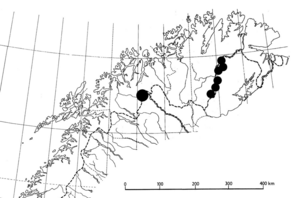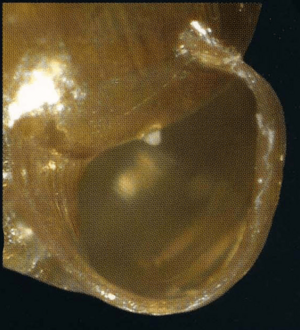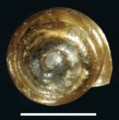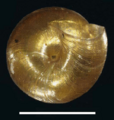Vertigo ultimathule facts for kids
Quick facts for kids Vertigo ultimathule |
|
|---|---|
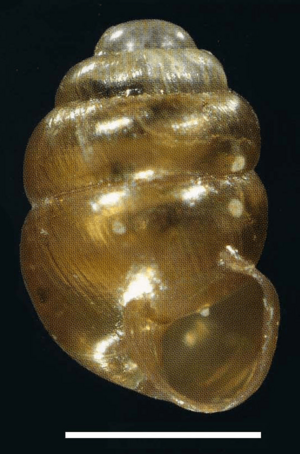 |
|
| A close-up view of the shell of the Vertigo ultimathule snail | |
| Conservation status | |
| Scientific classification | |
| Synonyms | |
|
Vertigo (Boreovertigo) ultimathule von Proschwitz, 2007 alternate representation |
The Vertigo ultimathule is a tiny, air-breathing land snail. It is a type of mollusc that lives on land. These snails are also known as micromollusks because they are so small. They belong to a family called Vertiginidae, which are often called whorl snails.
Contents
About the Vertigo ultimathule Snail
This special snail was first described in 2007. It is known for its very small size. The Vertigo ultimathule is a fascinating part of the natural world.
Where Does It Live?
The Vertigo ultimathule snail is found in a few specific places. These areas are all in northern Europe.
You can find it in:
- Finnmark County in Norway. It lives in the river valleys of the River Tana and its branch, the Anarjohka.
- Pältsan, which is the very northernmost part of Sweden.
The first place this snail was found is called the type locality. This spot is in the Pältsan-area, in the northern part of Swedish Lapland. Scientists believe that this snail might also live in other parts of Finnmark. It could also be in nearby areas of Finland and Sweden. It seems that Vertigo ultimathule is quite rare. It has a very small home range. It only lives in northern Norway and Sweden.
What Does It Look Like?
The Vertigo ultimathule is a medium-sized snail for its group. It grows to be about 2.1 to 2.2 millimeters tall. That's about the size of a tiny grain of rice! Its width is around 1.3 to 1.4 millimeters. Its shell has about 4.6 to 4.7 whorls. Whorls are the spirals or turns of the shell.
The shell looks almost like a cylinder. Its whorls are rounded and stand out. They are separated by a clear, deep line called a suture. The shell is not perfectly oval like some other Vertigo snails. The last whorl, which is the biggest and newest part of the shell, does not get much narrower at the bottom.
If you look at the snail from the left side, the outer edge of the last whorl forms a blunt corner. This corner is close to the umbilicus, which is a small hole at the center of the shell's base. The aperture is the opening of the shell. It usually has no teeth inside. Sometimes, it might have a very small, delicate tooth deep inside. The edge of the opening, called the mouth-edge, is simple. It is not very thick.
The shell's color can be light yellow to dark yellow-brown. Its surface is shiny. It has clear, but uneven, rough lines on it. These lines are called striations.
Where Does It Prefer to Live?
The places where Vertigo ultimathule snails are found are usually in brook valleys. They also live on mountain slopes. These areas often have mountain birch trees. They also have Salix shrubs, which are types of willow bushes.
Scientists measured the soil's pH in two places where the snails live. The pH levels were 6.75 and 6.0. This means the soil is slightly acidic. The places in Norway where these snails live are about 180 to 200 meters high. The places in Sweden are a bit higher, from 520 to 620 meters in altitude.
Images for kids



